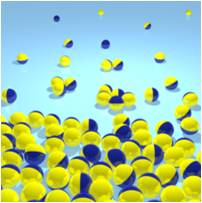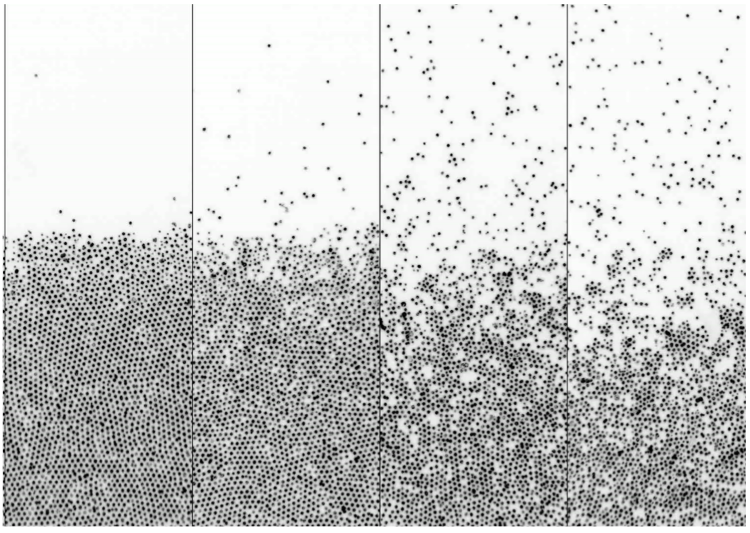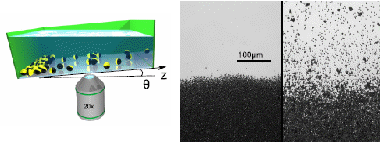More highlights
|
Effective adhesion between active particlesWe show that artificial self-propelled colloids can self-assemble and form clusters. This behavior can be quantified in thermodynamic terms: we have measured the equation of state of an assembly of colloids and found an effective adhesion, whose strength, surprisingly,increases with the activity. This work paves the way for quantifying non-equilibrium interactions between active particles. Nonequilibrium equation of state in suspensions of active colloids, Ginot et al., Phys. Rev. X (2015). |
Self-propelled colloids (sketched on the left) at increasing activity (right) |
Active colloidsWe study experimentally dense suspensions of active colloids. Such a system of self-propelled particles is intrinsically out of equilibrium. We show that for intermediate volume fraction of colloides, there is a new phase of dynamical clusters, that continously break and recombine. The average cluster size increases linearly with activity. A chimiotactic agregation mechanism that was introduced for bacteries allow to rationalize those observations. Dynamic clustering in active colloidal suspensions with chemical signaling, Theurkauff et al., Phys. Rev. Lett. (2012) |
Left) microscopy observation of colloid sedimentation under effective gravity. Right) 2D images of colloids after sedimentation, for passive and active colloids (left and right respectively). In the latter case, one notes the appearance of clusters as well as an extended gaz phase. |




















